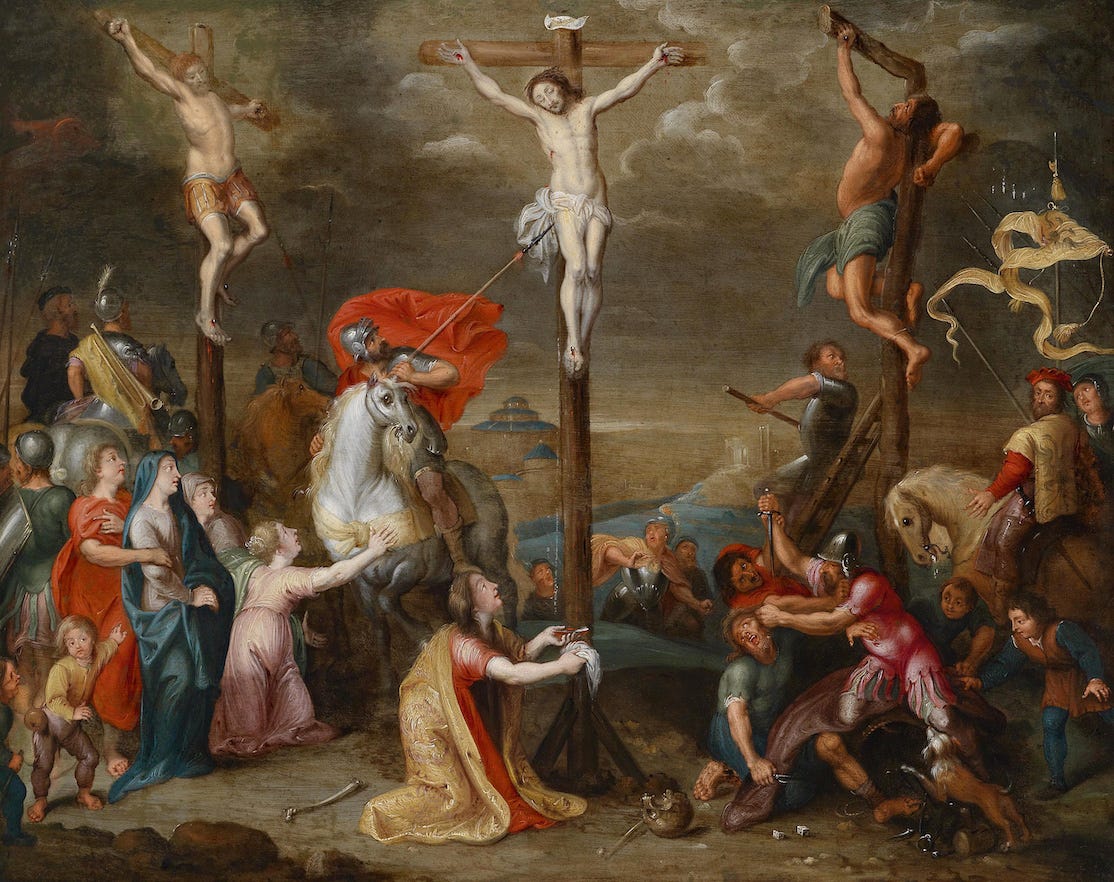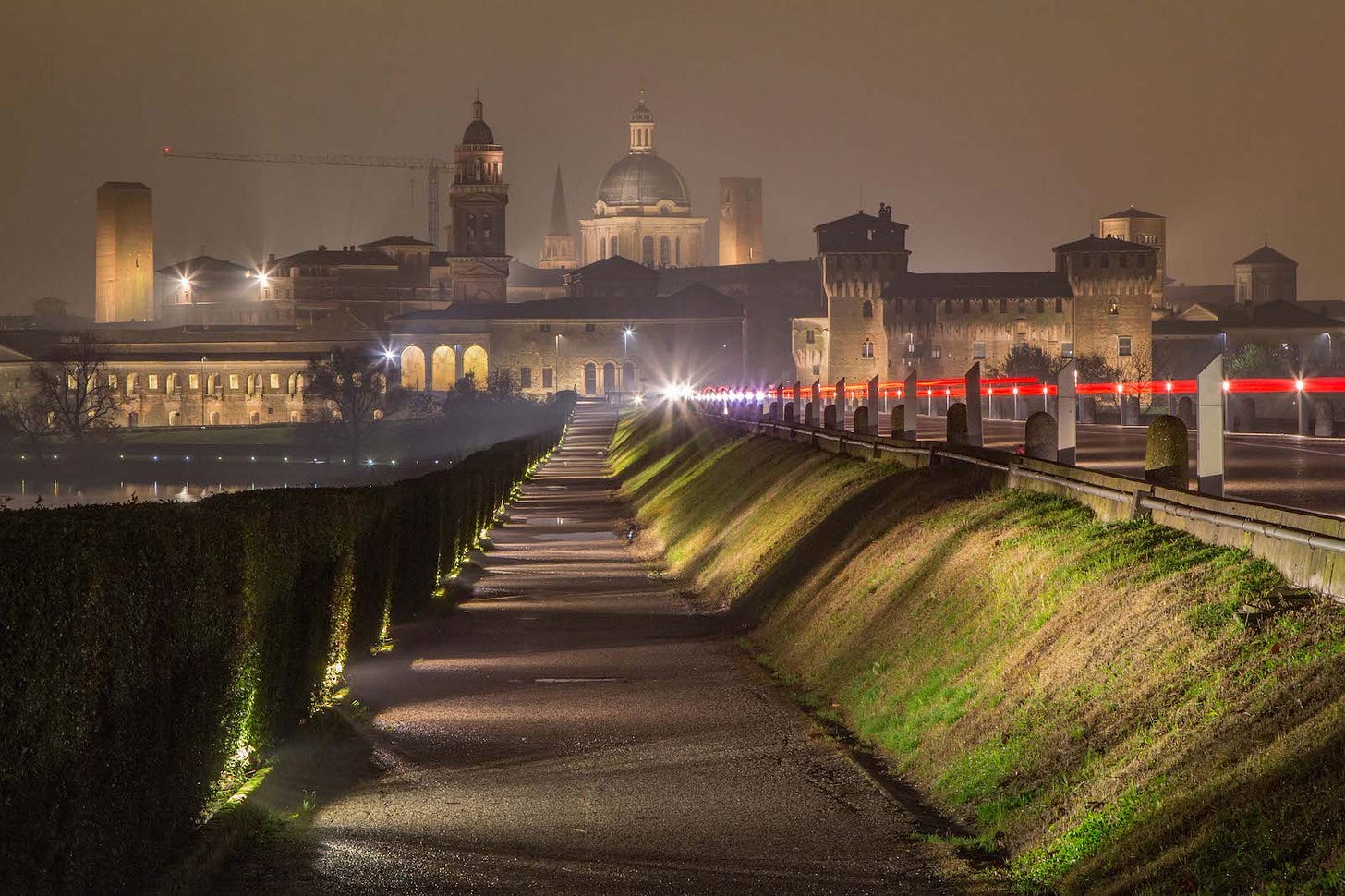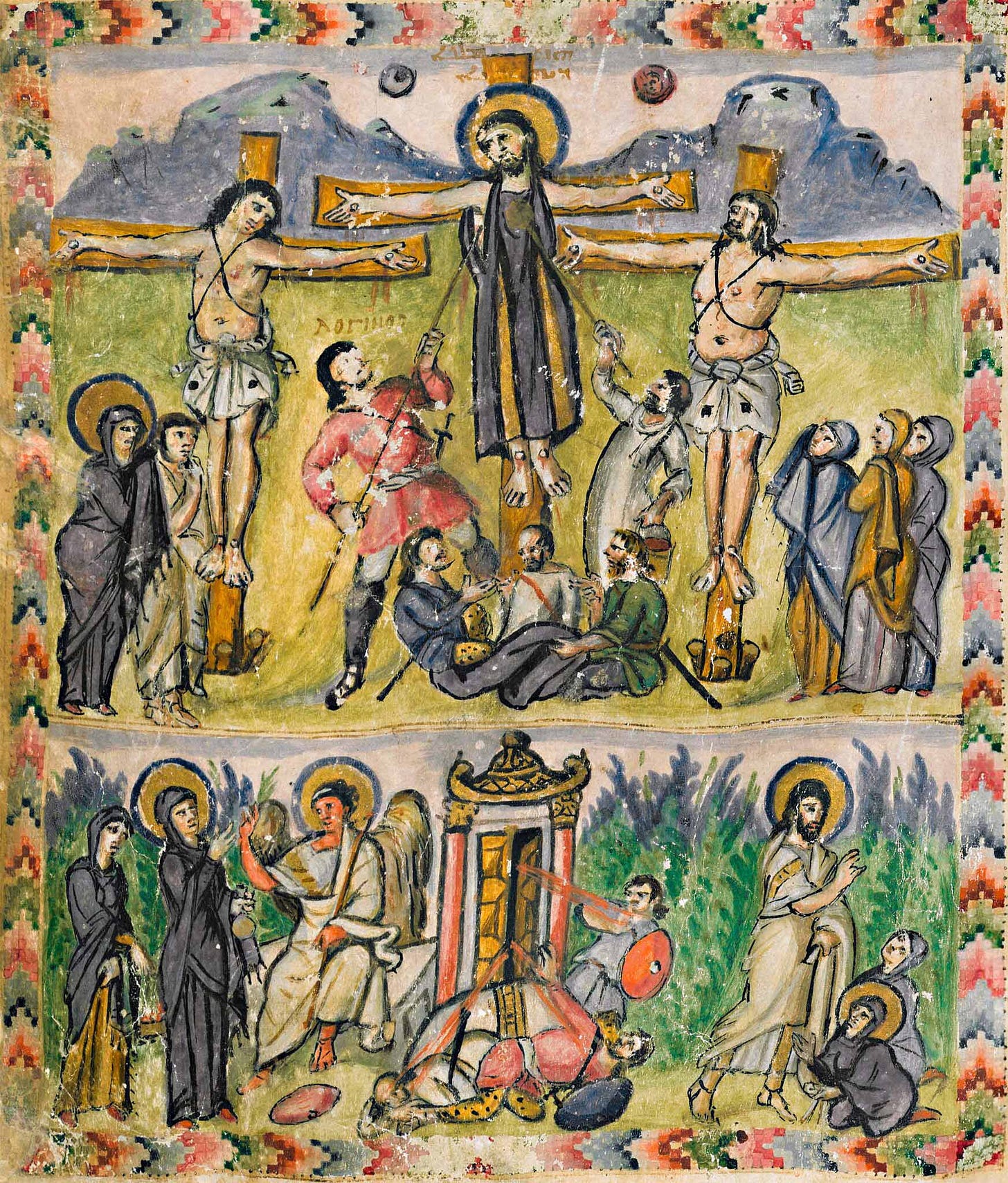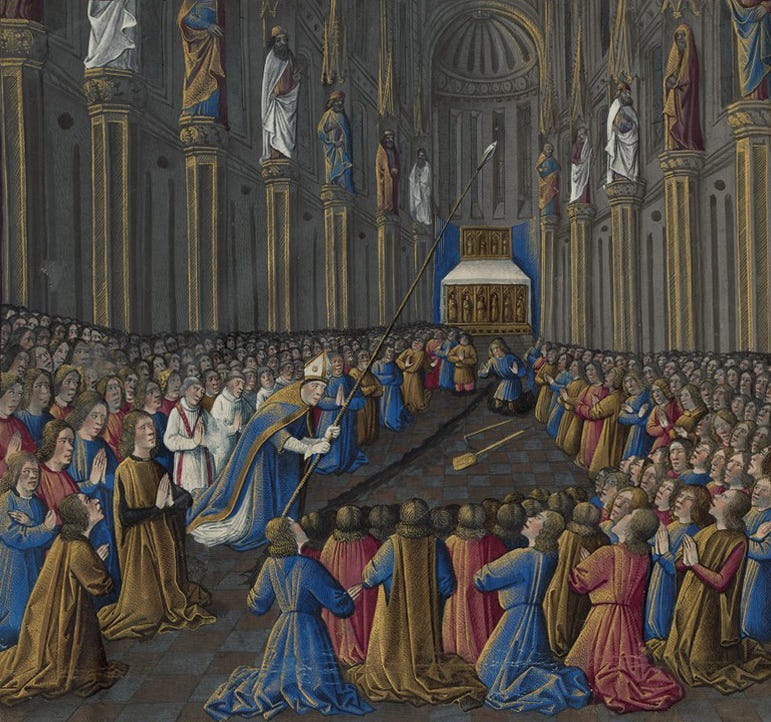Where is the Holy Lance?
The spear that pierced Jesus Christ is one of the holiest relics in Christendom. So where is it located today?
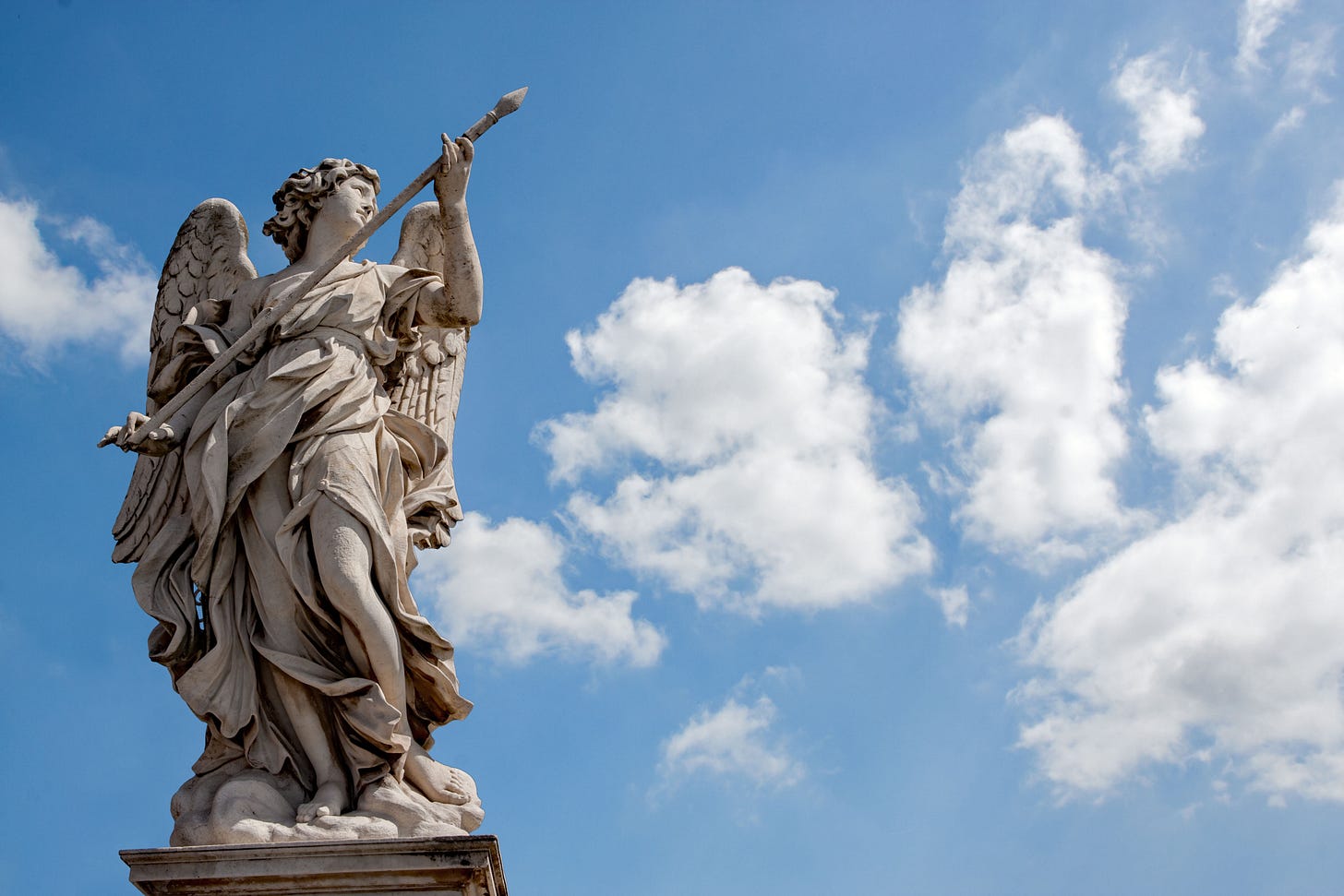
On Thursday, we considered the adventure that was the life of the crusader Bohemond, Prince of Taranto, and his role in the greatest ordeal of the First Crusade — the Siege of Antioch.
Among the many dramatic moments of that siege was the reported discovery, in the Cathedral of Antioch, of one of the holiest relics in all of Christendom — the Holy Lance, or the spear that was thrust by a Roman soldier into the body of Christ at the Crucifixion.
The effect of this moment had few precedents in history, as the morale of the hungry and disease-ridden crusaders soared to such astounding heights that in one mass, fearless sortie on the 28th June 1098, they vanquished utterly the vast armies of Kerbogha, and opened the road to Jerusalem and the ultimate triumph of the First Crusade.
For this alone, irrespective of the doubts over its authenticity that prevailed even at the time, the impact of the Holy Lance and its mystique upon real world history is profound. To possess the Lance, as a result, is to command immense historical as well as religious prestige.
In this article, therefore, we consider the simple question — where is the Holy Lance today?
What is the Holy Lance?
When dealing with holy relics, and especially those of the highest order that connect to Christ himself, one must always be careful to distinguish between what is explicitly known from the Bible, and what developed as part of later traditions.
In the case of the Holy Lance, this process is rendered straightforward by the fact that the weapon itself is mentioned only once directly in the Bible, in the Gospel of John:
“Therefore, because it was the Preparation Day, that the bodies should not remain on the cross on the Sabbath — for that Sabbath was a high day —, the Jews asked Pilate that their legs might be broken, and that they might be taken away. Then the soldiers came and broke the legs of the first and of the other who was crucified with Him. But when they came to Jesus and saw that He was already dead, they did not break His legs. But one of the soldiers pierced His side with a spear, and immediately blood and water came out.”
John 19:31-34
After the nails had transfixed both hands and both feet, the spear inflicted the last of the Five Holy Wounds upon Christ, and with its blade thus imbued with the blood of the Son of God, the Holy Lance assumed its reverence as an object rivalled only by the other so-called Arma Christi — the True Cross, the Crown of Thorns and other Instruments of the Passion, including the legendary Holy Grail.
All other details, therefore, that constitute the tradition of the Holy Lance were elaborated over the course of the centuries which followed. Chief among them is the identity of the Roman soldier who wielded it.
The first recorded trace is found in the apocryphal Gospel of Nicodemus, written around the turn of the 5th century AD, which records his name as Longinus (VII.8). Traditions later still expanded upon this Longinus, connecting him with the otherwise unnamed centurion who, according to the Gospel of Mark, gazed awestruck upon Christ at the moment of his death, and when the veil of the Temple tore asunder, exclaimed with amazement: “Surely this Man was the Son of God!” (Mark 15:39).
Likewise, further extra-biblical accounts elaborate that Longinus, moved by what he witnessed, experienced an emotional conversion to Christianity. Others, maturing a full thousand years after the Crucifixion, relate that the splash of the Saviour’s blood cured him of an ailment of the eye.
The sensational ‘conclusion’ of his story maintains that following his epiphany, Longinus gathered the earth of Golgotha that was spattered with said blood, and bore it to Mutina in Italy, where he would later be martyred. Indeed the Basilica of Sant’ Andrea in today’s Mantua has long been believed to be the site where both the blood and the bones of Longinus himself are held.
Curiously, however, the Holy Lance did not appear to accompany Longinus to Italy…
The Holy Lance in the Holy Land
The earliest apparent reference to the Holy Lance itself as a venerated relic lies in the writings of Cassiodorus Senator, one of the first generation of Romans to be born and flourish after the fall of the Roman Empire in the West.
An erudite man who served the court of Theodoric the Great and founded both a scholastic and monastic community in Calabria, around AD 550 Cassiodorus would in his commentary on Psalm 86 record the presence of the Instruments of the Passion in Jerusalem, including “The lance which pierced the Lord's side so that the healing which flowed from it might aid us”. Roughly a generation later, the anonymous pilgrim of Piacenza likewise wrote that in Jerusalem, he observed the Crown of Thorns alongside “the lance with which He was struck in the side” in the Basilica of Mount Zion.
The chaotic collapse of Roman rule in the Levant, however, would thicken the plot. According to the Chronicon Paschale, Jerusalem was ransacked by Persian armies following its capture in AD 614 by the Sassanid Empire, and while the wood of the True Cross was captured, the Lance, or at least a fragment of it, was rescued by a certain Nicetas, who bore it to the safety of Constantinople.
Bishop Arculpus, however, records having sighted the Lance in Jerusalem once more in the year AD 670, after the relic had possibly been restored to the city by the Emperor Heraclius following the Roman reconquest of the city in AD 630.
From this moment, however, the trail of the Holy Lance departs Jerusalem, and splits…
The Rediscovery at Antioch
The story of the Holy Lance indeed resumes in its most epic fashion in the late 11th century, when the armies of the First Crusade, having endured the harsh march across Anatolia, besieged the great city of Antioch.
On the 3rd June 1098, after eight months of torturous siege, the crusaders, their path opened by the subterfuge of Bohemond of Taranto, overran the lower city. Their victory would be short-lived, however, when Saracen reinforcements from Mosul led by Kerbogha arrived just two days later, forcing the Christians immediately onto the defensive.
Plunged into a state of deplorable deprivation by the days which followed, with both their bodies and food supplies all but exhausted, the crusaders despaired. Their leaders, fighting to remain optimistic, each swore an oath that none would abandon their post. Yet it was in that moment of their greatest desperation that Peter Bartholomew, a clergyman travelling with the army of the Count Raymond of Toulouse, came forth, sharing a vision that had afflicted him, in which the Apostle Andrew had spoken these words to him:
“I am St. Andrew, the apostle. Know, my son, that when thou shalt enter the town, go to the church of St. Peter. There thou wilt find the Lance of our Saviour, Jesus Christ, with which He was wounded as He hung on the arm of the cross."
Gesta Francorum, IX.25
Just as there were many who, at the end of endurance, willingly believed, there were many, including Adhemar of Puy, the Papal Legate himself, who sensed in Peter a charlatan and an opportunist. As this division gnawed at the crusaders, some time afterward the clergyman reported a second visitation, in which the Apostle had guided him to the site of the Lance, revealing that the army that bore the holy weapon before it could not be conquered.
Thus it was that on the 15th June 1098, Peter Bartholomew led the believers, including Count Raymond, to the Cathedral of Peter in Antioch:
“Thirteen men dug there from morning until vespers. And so that man found the Lance, just as he had indicated. They received it with great gladness and fear, and a joy beyond measure arose in the whole city”
Gesta Francorum, IX.28
Though many of the nobles remained suspicious, it was drowned out by the exultation which gripped the Christian host. No longer fearful of their plight, but embracing of it, they piously fasted for days, before marching out on the 28th June with the lance before them, and routing utterly the Saracen host that but weeks earlier had seemed their certain doom.
What became of the Antiochene Lance, however, remains ambiguous. Where indeed the Holy Lance dwells now, if it truly still exists, is a question with four principal answers…
Keep reading with a 7-day free trial
Subscribe to INVICTUS to keep reading this post and get 7 days of free access to the full post archives.



